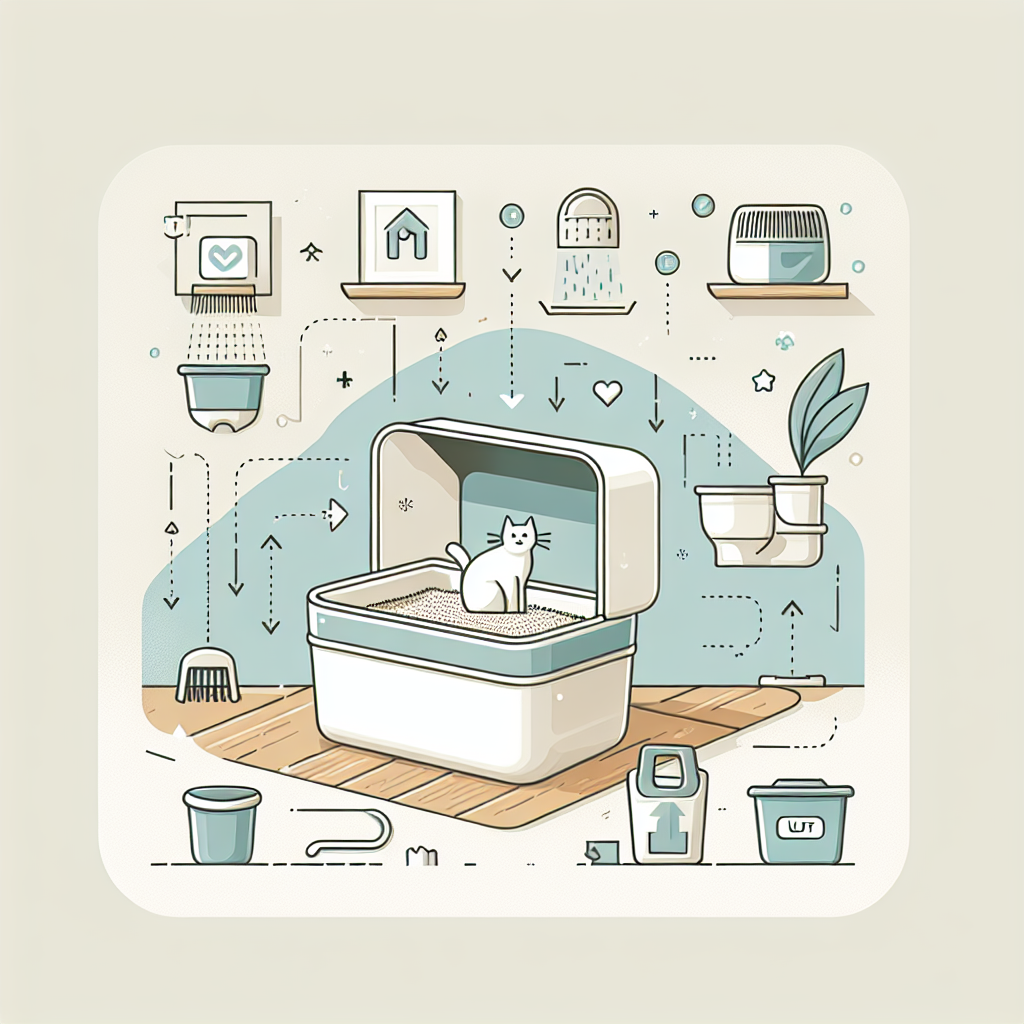
How to Clean and Maintain a Self-Cleaning Litter Box
Share
How to Clean and Maintain a Self-Cleaning Litter Box
For cat owners, keeping the litter box clean is often one of the most dreaded chores. Thankfully, modern technology has made this task much easier with the invention of self-cleaning litter boxes. However, even these advanced systems require regular care and maintenance to perform at their best. In this guide, we’ll dive into how to clean self cleaning litter box systems effectively so that your cat stays healthy, your home stays fresh, and your device lasts for a long time.
Why Proper Maintenance of a Self-Cleaning Litter Box Matters
It’s easy to assume that self-cleaning litter boxes require little to no human involvement, but this is a common misconception. While these devices save time and effort, neglecting regular upkeep can result in unpleasant odors, mechanical issues, and even unhygienic conditions for your cat.
Cats are sensitive to cleanliness, and if their litter box is not properly maintained, they may refuse to use it. Additionally, a neglected system can break down more easily, leading to costly repairs or replacements. Learning how to clean self cleaning litter box designs properly ensures both your cat’s comfort and the device’s longevity.
How Often Should You Clean a Self-Cleaning Litter Box?
The cleaning frequency depends on the number of cats in your home, their habits, and the type of self-cleaning litter box you use. In general:
- Empty the waste drawer at least every 2–3 days for single-cat households.
- For multi-cat households, check daily and empty as needed.
- Wash or wipe down the litter box’s interior at least once every 1–2 weeks.
- Conduct a deep cleaning once a month to prevent buildup of bacteria and odors.
Step-by-Step Guide: How to Clean Self Cleaning Litter Box
-
Turn Off and Unplug the Device
Before cleaning, always ensure the litter box is switched off and unplugged. This prevents accidental activation of moving parts during maintenance.
-
Remove the Waste Container
Open the waste drawer or compartment and dispose of the collected clumps and waste. Depending on the model, you may need trash bags or disposable liners.
-
Empty and Refresh Litter
Most self-cleaning litter boxes require clumping litter to work efficiently. Empty the old litter every 1–2 weeks and replace it with a fresh batch. This prevents odors and keeps your cat comfortable.
-
Wipe Down the Interior
Using a mild soap and warm water, wipe the surfaces of the litter box that come into contact with waste. Avoid harsh chemicals like bleach or ammonia, as these can be harmful to cats.
-
Clean the Sensors and Moving Parts
Some self-cleaning litter boxes use sensors to detect when your cat has used the box. Dust, litter, or waste can interfere with these sensors, so gently wipe them down with a microfiber cloth. Pay attention to rakes, rotating parts, or any automated scooping tools, as litter buildup may cause malfunctions.
-
Allow to Dry
After washing or wiping down the litter box, let all parts air dry completely. Moisture can cause clumping issues with litter and may damage electronic components.
-
Reassemble and Refill
Put the unit back together, refill with fresh litter, and power the system back on. Check that everything is functioning smoothly before allowing your cat to use it again.
Tips to Keep a Self-Cleaning Litter Box Fresh
- Use High-Quality Litter: Choose a clumping, dust-free litter that won’t clog the sensors or moving parts of your automated box.
- Keep the Area Ventilated: Placing the litter box in a well-ventilated room helps reduce odors.
- Check for Odor Control Features: Some models work best with activated carbon filters or odor-absorbing liners; replace these regularly.
- Train Your Cat Properly: Encourage consistent use by placing the box in a quiet, accessible area and keeping it clean.
Common Mistakes to Avoid
When learning how to clean self cleaning litter box systems, avoid these mistakes for best results:
- Forgetting to unplug the unit before cleaning—this poses safety risks.
- Using harsh chemicals that may retain odors or harm your cat.
- Ignoring sensor maintenance, which can disrupt automatic cleaning cycles.
- Not changing the litter often enough, resulting in odor buildup and unhappy cats.
Choosing the Right Self-Cleaning Litter Box
Investing in a quality self-cleaning litter box can save you time while ensuring a clean environment for your cat. One excellent option is the Automatic Sandbox for Cats Toilet Self Cleaning Litter Box. This advanced litter system is designed to reduce daily maintenance while keeping your cat’s litter area hygienic and fresh. With its durable design, automatic cleaning features, and easy setup, it’s ideal for busy pet owners who want convenience without compromising on cleanliness.
Pairing regular upkeep with a reliable product ensures your cat has a comfortable space while you enjoy a cleaner, odor-free home.
Final Thoughts
Learning how to clean self cleaning litter box systems is essential for any cat owner who values convenience and cleanliness. By following a consistent cleaning routine, checking sensors and moving parts, and choosing a reliable product like the Automatic Sandbox for Cats Toilet Self Cleaning Litter Box, you can make litter box care almost effortless. A little maintenance goes a long way in ensuring both your cat’s happiness and the longevity of your self-cleaning litter box.
Meta description: Learn how to clean self cleaning litter box systems effectively. Keep your cat’s litter box fresh, odor-free, and long-lasting with these tips.
```
